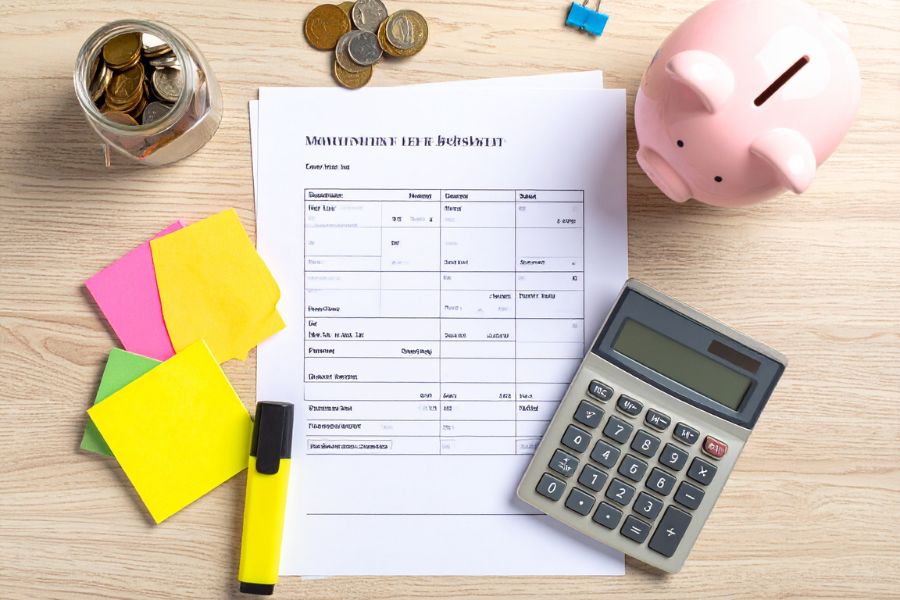When I walked across that graduation stage, I carried more than just a diploma—I carried $80,000 in student loans. Honestly, the number felt crushing. I kept thinking, “Am I going to be paying this off forever?”
But here’s the wild part: I managed to wipe out every penny of that $80,000 in just four years. I did it by mixing aggressive budgeting, boosting my income, and zeroing in on the highest-interest loans first. It wasn’t always smooth sailing, but these moves saved me thousands in interest and got me to financial freedom way sooner than I’d dreamed.

I stumbled a lot, but I picked up some real, practical tricks along the way. I want to lay out exactly what worked for me so you can try these methods on your own student debt journey—or at least find a little hope that it’s possible.
Key Takeaways
- Budget like your future depends on it (because it kinda does), and attack the highest-interest loans first.
- Find ways to earn more—side gigs, raises, whatever you can. Every extra dollar counts.
- Set milestones, celebrate small wins, and keep your motivation alive. This is a marathon, not a sprint.
Understanding My $80,000 Student Loan Debt
Before I could make a plan, I had to know what I was up against. My $80,000 in student loans came from both federal and private lenders, each with its own rules and rates.
Breaking Down Federal vs. Private Loans
My debt wasn’t just one big chunk. It was a weird mix of federal and private loans.
Federal loans made up about 60% of my total. Those included Direct Subsidized and Unsubsidized Loans from undergrad. The federal stuff was a bit more forgiving, with flexible repayment options and potential forgiveness programs.
The other 40%? Private loans. I took those out to fill the gap between what federal aid covered and what college actually cost. Private loans offered fewer repayment options, but sometimes the rates were lower.
I logged into my federal loan servicer’s site and realized my “one” federal loan was actually a bunch of smaller loans from every semester. Each one had its own interest rate and balance. That was a fun surprise.
Interest Rates and Loan Terms
Interest rates were all over the place. This is where things got interesting—and a bit stressful.
Federal Loan Rates:
- Subsidized: 3.76% – 4.29%
- Unsubsidized: 4.29% – 5.84%
Private Loan Rates:
- Fixed: 6.25% – 8.50%
- Variable: 4.75% – 9.25%
Those private loans with fixed rates above 6%? I made them my top priority. They racked up the most interest every month and cost me a fortune over time.
All my federal loans had standard 10-year terms. Private loans ranged from 10 to 15 years, depending on when I borrowed.
Assessing Minimum Payments and Loan Servicer Details
I juggled three different loan servicers. That meant three payments every month and three websites to keep track of.

My total minimum payment? $847 a month:
- Federal: $523
- Private: $324
Each servicer handled payments differently. Some would apply extra payments to future months, not to the principal, unless I specifically asked. I had to call and clarify exactly how I wanted extra payments handled. That little detail made a big difference when I started throwing extra cash at the highest-interest loans.
Building a Strategic Repayment Plan
A solid plan kept me from just treading water with minimum payments. I needed clear targets and a method for attacking multiple loans at once.
Setting Realistic Financial Goals
First, I looked at my take-home pay and expenses to see what I could actually afford for loan payments. I tracked every dollar for two months. That was eye-opening.
I set my first goal: pay $200 extra each month on top of the minimum. Nothing fancy, just doable.
I broke my $80,000 into smaller, less scary chunks:
- Knock out loans under $5,000 in 6 months.
- Get halfway done in 2 years.
- Finish everything in 4 years.
Celebrating each small win helped. When I paid off a loan, I’d grab a cheap dinner or treat myself to a movie night.
I also set income goals. I asked for raises and took on freelance work, all to boost my payments.
Choosing the Avalanche Versus Snowball Method
I compared both the avalanche and snowball methods before picking a side. The avalanche method goes after the highest interest rates first. The snowball method starts with the smallest balances.
Here’s how they stacked up for me:
| Method | Focus | My Example | Pros |
|---|---|---|---|
| Avalanche | Highest rate | 7.2% grad loan | Saves the most money |
| Snowball | Smallest balance | $3,500 undergrad loan | Quick wins, motivation |
I picked avalanche. My grad loans had rates between 6.5% and 7.2%, while undergrad loans hovered around 4.5%. Paying off the high-interest stuff first saved me about $3,000 in interest.
But it took patience—my first loan didn’t disappear for 8 months. I kept making minimum payments on everything and threw every spare dollar at the highest-rate debt.
Mastering Budgeting to Accelerate Payments
A detailed spending plan and automated payments made up the backbone of my debt elimination strategy. These two habits made every dollar count.
Creating a Detailed Spending Plan
I tracked every expense for a month. It was tedious, but totally worth it.

My take-home pay hit $4,200 monthly. Here’s where it went:
| Category | Monthly Amount |
|---|---|
| Rent | $1,200 |
| Utilities | $150 |
| Groceries | $300 |
| Transportation | $200 |
| Insurance | $180 |
| Phone | $60 |
That left $2,110 for loans and everything else.
I started with the 50/30/20 rule, but honestly, I flipped it. I put 50% of my income toward loans.
My new budget looked like this:
- Student loan payments: $2,000
- Emergency fund: $60
- Personal spending: $50
I checked my budget every week. Whenever I found extra money by cutting expenses, I sent it straight to my loans.
Meal prepping and ditching unused subscriptions added another $200 a month for debt payments. It’s wild how small changes add up.
Automating Payments for Success
I set up automatic payments so I couldn’t “accidentally” spend my loan money on something else. Payments hit the day after payday.
I split my $2,000 monthly payment: minimums first, then extras to the highest-rate loan.
My automation routine:
- Day 2: Minimum payments to all loans
- Day 16: Extra payment to the highest interest loan
Paying biweekly instead of monthly reduced my interest and saved me over $3,000 in charges.
I also automated $60/month to my emergency fund. Even small amounts add up.
My bank’s bill pay sent payments directly to servicers. No late fees, no missed payments, no drama.
Finding and Leveraging Extra Income
Extra income became my not-so-secret weapon. I focused on side hustles that fit my skills, and I funneled every dollar straight to my loans.
Increasing Earnings With Side Hustles
I started by asking myself what I was already good at. Writing came naturally, so I jumped into freelance content creation.
My best side hustles:
- Freelance writing: $500-1,200/month
- Tutoring college students: $20-30/hour
- Dog walking: $15-25/walk
- Selling stuff I didn’t need
I treated these gigs like a real business. I set aside hours each week and tracked every dollar.
My goal? At least $800/month in side income. That all went to my loans.
My first freelance job paid just $50, but within six months, I had regular clients and bigger checks.
Utilizing Overtime and Windfalls
I took every overtime shift I could. Those extra hours added $200-400 a month.

I also threw windfalls at my loans:
- Tax refunds ($2,000-3,000 a year)
- Work bonuses ($500-1,500)
- Birthday and holiday money
- Credit card cash back
I made a rule: if I didn’t expect it, it went to loans. Even $20 birthday gifts.
My biggest windfall was a $4,000 tax refund. I sent it straight to my lender and knocked out a chunk of debt. That felt amazing.
I set up automatic transfers for windfalls too. The money hit my loan servicer before I could talk myself into spending it.
Overcoming Challenges and Staying Motivated
Paying off $80,000 in student loans isn’t just about math. It takes grit, some luck, and a plan for when life throws curveballs. I leaned on an emergency fund and made sure to notice every small win.
Dealing With Setbacks and Emergencies
Life happened—of course it did. My car broke down in year two and cost me $1,200 I hadn’t planned for.
That’s why I built a $1,000 emergency fund before going all-in on debt. Some experts say to save more, but I needed balance.
When emergencies hit, I stuck to three rules:
- Use the emergency fund—no credit cards.
- Replace the money quickly by cutting spending for a few months.
- Never skip minimum loan payments.
Watching friends travel while I stayed home was tough. I reminded myself that short-term sacrifice would mean long-term freedom.
Some months, I couldn’t make extra payments because of medical bills or family stuff. I just picked up where I left off the next month.
Tracking Progress and Avoiding Burnout
I built a simple spreadsheet to track every payment. Seeing my balance drop—even slowly—kept me going.

My tracker included:
- Monthly balances by loan
- Total interest saved
- Projected payoff date
- Extra payments
I celebrated small wins. At $70,000 left, I treated myself to a $20 dinner. At $50,000, I took a day off work.
I found cheap, fun ways to relax—hiking, cooking at home, game nights with friends. No need for expensive distractions.
Automating payments helped me avoid the temptation to skip a month. Every payday, money went to debt before I could spend it elsewhere.
When my motivation dipped, I’d check how much interest I was saving. Knowing I’d save thousands by paying early kept me pushing through.
Frequently Asked Questions
Got questions about tackling big student loans? Here are some of the most common ones I’ve heard—and what actually worked for me as I paid off $80,000 in four years.
What strategies can help accelerate paying off large student loan debts within five years?
Let’s talk about the debt avalanche method. I went after my highest interest rate loans first, and honestly, that move saved me thousands in interest. If you’re just making minimum payments across all your loans, you’re probably paying way more than you need to.
Switching to biweekly payments made a huge difference for me. Instead of one payment a month, I paid half my monthly amount every two weeks. That’s 26 payments a year—way more than the usual 12. I shaved nearly a year off my repayment timeline just by tweaking my schedule.
Whenever I got a windfall—tax refund, work bonus, or some extra cash from a side hustle—I didn’t let it sit in my checking account. I threw every bit of it at my loan principal. It’s wild how fast those extra payments add up.
Refinancing private loans was another game-changer. I knocked my interest rate down from 8.5% to 4.2%. That one decision saved me over $15,000 in total interest. If you qualify, it’s worth looking into.
Are there specific budgeting techniques to effectively reduce student loan balances when facing financial hardship?
When money got tight, I leaned hard on the 50/30/20 budget. Half my income went to essentials, 30% to wants, and 20% straight to debt and savings. It kept me honest about my spending.
I tracked every expense for three months. Turns out, those small daily coffees and random subscriptions were draining $200 a month. I redirected that cash to my loans instead.
Meal planning changed the game. Cooking at home dropped my food budget from $600 to $250 a month. That’s $350 more I could put toward my debt.
I didn’t stop there—I called up my phone, insurance, and internet providers to negotiate lower rates. Those calls freed up another $125 a month for loan payments.
Can you provide tips on how to meet aggressive student loan payment goals, such as repaying $100,000 in two years?
If you want to crush a huge loan in record time, you’ll need to boost your income. I picked up freelance gigs and doubled my monthly earnings for the last two years of repayment.
Living below your means is essential for aggressive payoff goals. I moved back home for a while and cut every non-essential expense. It wasn’t glamorous, but it worked.
Selling assets can give you a big push. I sold my car, pocketed $8,000, and put it all toward my loans. Public transportation wasn’t always fun, but seeing my balance drop felt amazing.
Automating payments helped me avoid temptation. I set up automatic transfers so extra money hit my loans before I could spend it elsewhere.
How does one negotiate or find a lower monthly payment plan for high student loan debt like $80,000?
Federal loans offer income-driven repayment plans. I used the SAVE plan when my salary was low, and it capped my payments at a manageable percentage of my income.
If you’re really struggling, reach out to your loan servicer and ask about temporary forbearance. It pauses payments, though interest keeps adding up on most loans.
Private lenders can be flexible, too. I managed to negotiate a six-month interest-only period when I switched jobs. It took some persistence, but it helped me stay afloat.
Consolidating federal loans can stretch your repayment out to 30 years, which lowers monthly payments. Just know you’ll pay more interest in the long run.
What are the potential benefits and drawbacks of aggressively paying off student loans versus making minimum payments?
Going hard on loan payoff saves a ton on interest. I knocked out my loans early and saved over $25,000 compared to the standard 10-year plan.
Paying off loans fast can also help your debt-to-income ratio, which matters if you want to buy a house. I scored a better mortgage rate because those student loans were gone.
But there’s a downside—opportunity cost. Every extra dollar toward loans is a dollar not invested in retirement or other growth. Sometimes I wondered if I should’ve balanced it out more.
Aggressive payoff can shrink your financial cushion. I kept my emergency fund pretty small while focusing on debt, and honestly, that felt risky at times.
What does the ‘7 year rule’ refer to in the context of student loans, and how does it affect debt payoff strategies?
You might’ve heard about the 7-year rule and wondered if it could help with student loans. Honestly, it’s a common misconception.
The 7-year rule usually means negative marks—like late payments—drop off your credit report after seven years. But, and here’s the kicker, student loan debt doesn’t just disappear after that time.
Student loans actually stick around on your credit report for the full life of the loan. I’ve seen folks get tripped up by this, thinking their loans magically vanish—if only, right?
Unlike credit card debt, student loans almost never go away in bankruptcy. There’s no statute of limitations either. That means your student loan debt can follow you for decades, until it’s paid off.
Now, if you’re dealing with federal student loans, there’s a glimmer of hope. Federal loans offer forgiveness after 20-25 years of qualifying payments under income-driven repayment plans. This can totally change your payoff strategy. Maybe you don’t need to throw every spare dollar at your loans if forgiveness is on the table.
Private loans? They’re a different beast. Some states set a statute of limitations for collection activities on private loans, but that doesn’t erase the debt. It just means collectors might have less power to chase you down after a certain point.
So, when you’re mapping out your student loan payoff plan, keep these quirks in mind. The 7-year rule won’t save you here, but knowing the actual rules can help you make smarter decisions.


